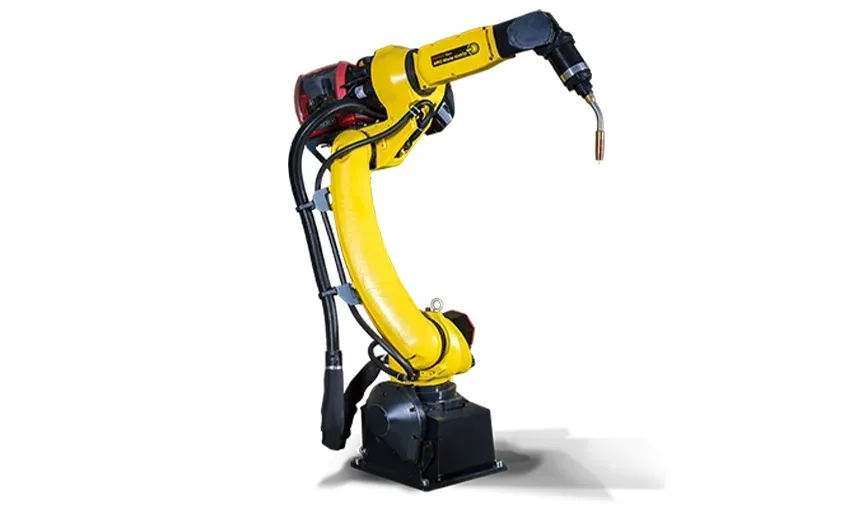The Welding Robot
The welding robot for sale is used to increase efficiency in production processes. Its use in the industry is steadily growing, offering faster and more consistent results compared to manual welding operations.
The welding robot for sale provides significant time savings for companies engaged in mass production. At the same time, it increases production capacity by lowering costs over the long term. These robots, available in models suitable for different welding methods, are used across various sectors.
2nd Hand Welding Robot for Sale
Among the technological equipment used in industrial production processes, the welding robot is one of the systems that finds application in various sectors.

Such robots are integrated into production lines in factories or workshops to ensure that welding operations are carried out within specific standards. Especially businesses with high-volume production may choose such solutions in their processes.
Another important concept, the industrial robot, is not only used in welding. It can also be utilized in various production stages such as handling, assembly, and packaging. Welding-focused models contribute to the regular progress of the production process by enabling the joining of metal parts with specific methods.
From a technical perspective, the automatic welding machine differs from manual welding machines as it operates according to a programmed process without human intervention. These devices can be added to production lines to ensure that planned welding operations are applied continuously and consistently.
The robotic welding system, preferred in different production areas, shows functional diversity. These systems operate through the combined functioning of software, hardware, and control mechanisms used in the production line. Thus, the desired process steps can be applied in the processing of different metals or materials.
The main points encountered in the processes related to the use of second-hand welding robots for sale are as follows:
- Evaluation of compatibility with production lines
- Examination of technical documents and software support
- Review of usage history and maintenance records
- Checking compliance with existing production capacity
The purchase of a 2nd hand welding robot for sale is a technical process for industrial companies. In this process, the model of the device, software compatibility, usage history, and its relation to the production line are evaluated before proceeding.
Welding Robot for Sale
Welding robot for sale systems are an important investment for businesses aiming to increase efficiency and quality in today’s industrial production lines. These machines reduce production costs by carrying out fast, reliable, and standardized welding processes on different types of metals. Especially in mass production, the continuity they provide has made them indispensable in modern industry.
Thanks to advanced automation technology, these systems reduce dependence on manual labor force. They help companies increase production speed while strengthening competitiveness. The ability to integrate with equipment such as gas metal arc welding machines and laser welding machines used in various industries also makes production processes more flexible.
The main points to be considered in the process of purchasing a welding device for sale are as follows:
- Technical service and warranty support: After-sales support for the robot must be investigated.
- Spare part availability: Original spare parts are important for long-term use.
- Software and hardware compatibility: It should provide easy integration with the existing production line.
- Energy consumption and maintenance costs: Must be taken into account as they directly affect operating expenses.
Supported by robotic technologies, these systems provide a safe working environment in the long run and protect worker health. In production lines where human errors are minimized, efficiency and quality standards increase.
Welding machines designed for different needs can be selected according to the capacity and projects of companies. Welding robot for sale solutions accelerate return on investment while ensuring continuity in production processes. Therefore, they stand out as a strong alternative for both small workshops and large industrial facilities.
Frequently Asked Questions
Prices vary depending on brand, model, production capacity, and maintenance history.
They are widely used in automotive, white goods, construction, and metal processing industries.
Automatic systems provide speed and precision, while manual methods require more labor.
Yes, it can be integrated into robotic lines to increase efficiency in mass production.
It is preferred in thin metal processing projects that require high precision.
Energy consumption, spare part availability, and software compatibility should be considered.
Low maintenance costs and high efficiency accelerate return on investment.
For more information about welding robots for sale and beyond, you can contact Eko Kaynak.

